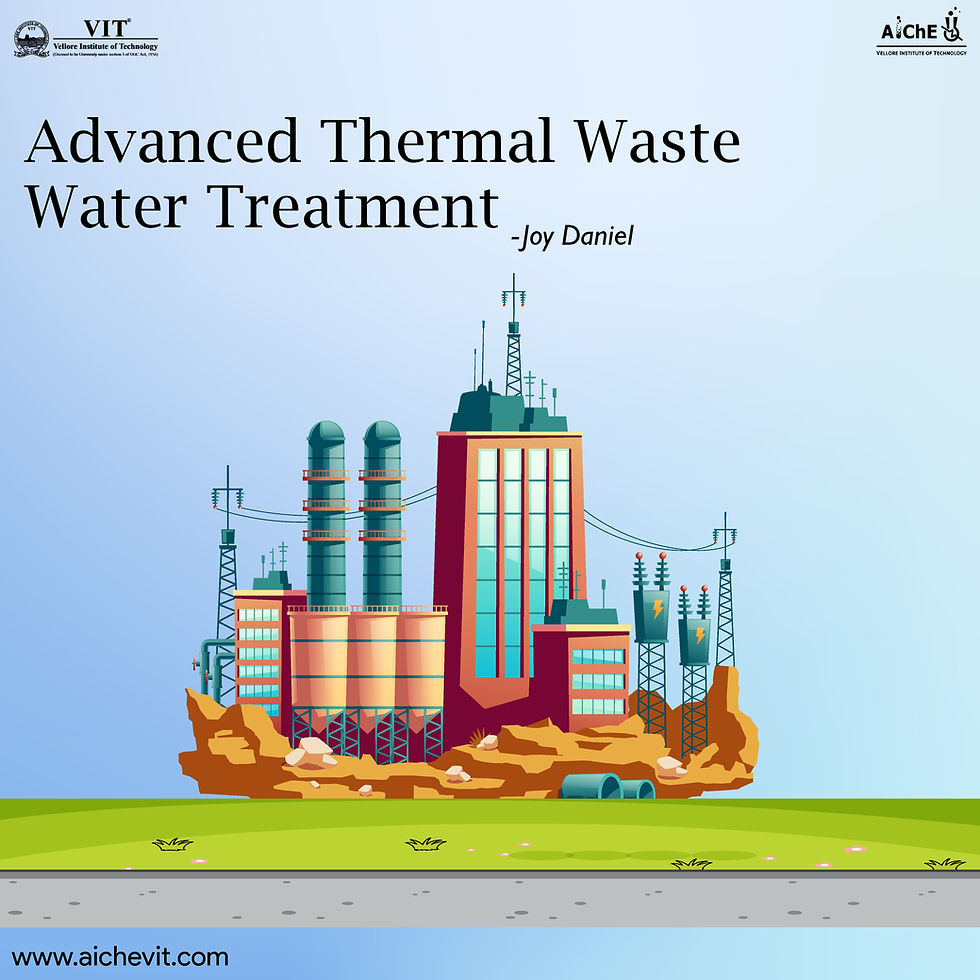Sustainable Air Conditioning Systems
- AIChE-VIT

- Apr 20, 2022
- 3 min read

Planet Earth is getting hotter day by day due to various human-related activities. Due to rapid advancements happening around the globe, the rate of global warming is increasing at an alarming rate, ultimately leading to even warmer and uncomfortable summers. In order to get some relief from this scorching weather, air conditioning systems are used in residential places, commercial zones, industrial areas etc. Most of the existing air conditioning systems are based on the conventional mechanical vapour compression cycle. Unfortunately, this cycle consists of expensive compressors, refrigerants and other costly pieces of equipment, making the entire system very costly. The cooling generated also comes with very high power consumption. Some of the refrigerants used are harmful to nature, and a few of them, being potential greenhouse gases, can increase the rate of global warming.
Therefore, to provide ecologically and pocket-friendly cooling solutions, one of the best alternative technologies to be used is the Evaporative Cooling System. The primary reason behind the cost-effectiveness of this technique is that, instead of expensive working fluids (refrigerants) and heavy-duty equipment like compressors, it implements the usage of water and air. Evaporative cooling systems eliminate the use of CFCs, thus making it easy for them to integrate with already existing cooling systems.
Evaporative Cooling Systems can be broadly classified into two systems: Direct Evaporative Cooling and Indirect Evaporative Cooling systems. The Basic working of Direct Evaporative Cooling system (DECs) is that the hot fluid (air) is taken from the atmosphere and is passed through the dry channel, which in turn is surrounded by a wet channel, through which cold fluid (water) flows continuously. Since air is at a higher temperature than water, heat is transmitted from air to water. Once the water particles gain the required amount of Latent heat of vaporization, those water particles evaporate. Ultimately, the hot fluid (air) gets cooled and the cold fluid (water) gets heated up. The terracotta based cooler is another recent innovation, wherein the same technique is applied. Small porous pipes made of clay are stacked, as shown in Fig(1), and water is dripped from the top such that it falls perpendicular to the pipe surface (cross-flow fashion). Blowers blow hot air from one side and cool air is obtained on the opposite end.
DECs do have their demerits, however. The cooled air contains a very high amount of moisture content, thus making the space very humid and creating a lack of thermal comfort.

In order to overcome the cons of DECs, Indirect Evaporative Cooling systems (IECs) could be implemented, wherein one of the most promising configurations of IECs is based on the Maisotsenko cycle. In this configuration, an additional step involved (previously discussed in DECs) is the use of cold, wet air to cool down the hot fluid (air). Thus, the heat is effectively absorbed by cold fluid (cold air), and the moisture content in that stream diminishes due to the evaporation of water particles. Ultimately, cold air with minimal moisture content is obtained, which cools down the space and does not cause any thermal discomforts.
These are some of the various sustainable cooling techniques that can potentially replace the conventional, non-sustainable cooling methods currently implemented. Thus, keeping the depletion of fossil fuels and other environmental impacts like global warming in mind, people should start opting for such techniques and implement them on a larger scale, for a better, eco-friendly future.
- Sachin Bhaskar Rajesh





Gr8 Work!! This technology is really unique and applicable.
Amazing article Sachin! Really informative!